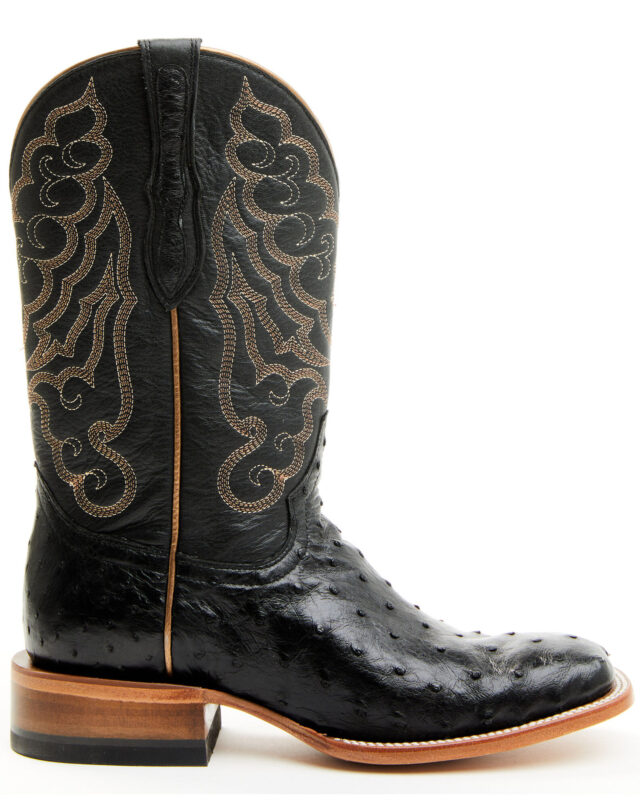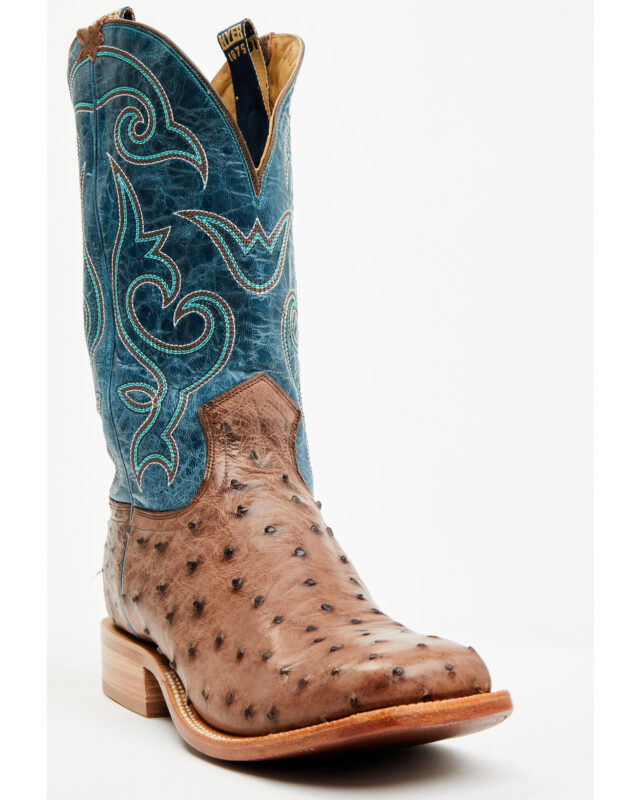Ostrich Boots
how Ostrich Boots are Made: A Step-by-Step Process 03
Ostrich boots have long been recognized for their exceptional durability, comfort, and luxury. Made from ostrich leather, these boots stand out due to their distinctive texture, which resembles a pattern of small, round bumps. Whether you’re looking for mens ostrich boots or a stylish pair of black ostrich boots, these shoes offer an unmatched level of craftsmanship. In this blog post, we’ll dive into the step-by-step process of how ostrich boots are made, shedding light on the methods and materials that contribute to their iconic look. From the selection of the right ostrich skin to the final touches that define brands like Tony Lama ostrich boots and Ariat ostrich boots, let’s explore the making of these unique boots in detail.
Ostrich Boots: What Makes Them So Special?
Before delving into the creation process, it’s essential to understand what makes ostrich boots stand out. Ostrich leather, specifically the hide from the ostrich’s back and legs, is highly prized for its softness, flexibility, and durability. The unique texture of ostrich skin is one of its most distinguishing features, which is created by the natural follicles left behind from the bird’s feathers. The leather’s ability to withstand wear and tear, combined with its luxurious look, has made ostrich boots a popular choice for both everyday wear and high-end fashion.
The process of creating ostrich boots combines traditional craftsmanship with modern techniques. Many renowned brands such as Tony Lama ostrich boots and Ariat ostrich boots have perfected this method over decades, providing consumers with the finest quality footwear.
Step 1: Selecting the Right Ostrich boots skin
The first step in making ostrich boots is selecting the right ostrich hide. Not all ostrich leather is created equal, and the quality of the leather will impact the final product. Ostrich skins are sourced primarily from ostrich farms, where the birds are raised for leather production. High-quality skins are carefully selected based on their texture, thickness, and overall appearance.
The hide is typically taken from the bird’s back or legs, as these areas offer the most durable and aesthetically pleasing leather. The skin is then cleaned, inspected, and prepared for the tanning process.
Step 2: The Tanning Process ostrich boots
Tanning is the process of preserving and softening the leather. For ostrich boots, vegetable tanning is often used to ensure the leather maintains its natural look and feel. This involves soaking the leather in a tannin solution made from natural plant materials. The tanning process can take weeks, as the leather needs to be meticulously treated to ensure its softness, durability, and flexibility.
Once the tanning is complete, the leather is dried and conditioned to retain its suppleness. Some manufacturers may apply additional oils or treatments to further enhance the leather’s texture and sheen.
Step 3: Cutting and Shaping the Leather
Once the ostrich leather is fully prepared, it is time for the leather to be cut and shaped into the various components needed for the boots. This step is one of the most intricate parts of the process, requiring skilled craftsmen to ensure every piece fits together perfectly.
For high-end brands such as Tony Lama ostrich boots or boots, only experienced artisans are trusted to cut the leather. The distinctive “quill” pattern—those small bumps unique to ostrich leather—must be strategically placed on the boot to create an aesthetically pleasing design. Typically, the quills are centered around the upper part of the boot, while the smoother sections of the leather are used for the heel and sole.
Step 4: Assembling the Boot
After cutting and shaping the leather, the individual components of the boot are sewn together. The upper, which covers the foot, is attached to the sole of the boot using a combination of stitching and glue. The stitching itself is often done by hand for high-end ostrich boots like Tony Lama ostrich boots, as this ensures the highest level of precision and craftsmanship.
During this stage, the shape and structure of the boot begin to take form. The bootmaker will also attach the heel, ensuring it is sturdy and durable. Depending on the design of the boot, additional features such as decorative stitching or overlays may be added at this stage.
Step 5: Adding the Finishing Touches
The final touches are what truly elevate a pair of ostrich boots. This includes adding custom embroidery, inlays, and other decorative elements to give the boots a unique flair. Many brands, including boots and JRC ostrich boots, are known for their intricate detailing, often incorporating Western motifs like stars, flowers, and other patterns.
The boots are then polished and cleaned to ensure they shine, highlighting the natural beauty of the ostrich leather. Some manufacturers may apply a special protective coating to the boots to enhance their longevity and resistance to the elements.
Step 6: Quality Control and Inspection
Once the boots are complete, they undergo a rigorous quality control process. This includes inspecting the stitching, checking for any defects in the leather, and ensuring the fit and finish meet the highest standards. For premium boots like boots, every pair is carefully examined by experts who know exactly what to look for.
If any flaws are found, the boots are sent back for repair or adjustments. Only when the boots pass inspection do they move on to the packaging stage.
Step 7: Packaging and Distribution
Finally, the boots are carefully packaged and prepared for shipment. The packaging is often designed to protect the boots during transit, ensuring they arrive in perfect condition. Once the boots are packed, they are shipped to stores or customers worldwide, ready to be worn and admired.
Why Choose Ostrich Boots?
Ostrich leather boots, especially from trusted brands like JRC ostrich boots, offer unmatched durability, comfort, and style. The leather’s unique texture and rich, luxurious feel make it a popular choice for those seeking a high-end, timeless piece of footwear. Furthermore, ostrich leather is known for its exceptional wearability, as it remains soft and supple even after years of use.
Mens boots, whether black ostrich boots or more colorful designs, are a staple in Western wear, combining rugged durability with sophisticated flair. The combination of quality materials, expert craftsmanship, and intricate design details makes ostrich boots a must-have for anyone looking to invest in footwear that is both functional and fashionable.
FAQs
What makes boots so durable?
Ostrich leather is naturally durable and resistant to cracking, making it ideal for high-quality boots. The distinctive texture of the leather, with its unique quill pattern, adds an extra layer of strength and flexibility.
Are boots comfortable to wear?
Yes, ostrich leather is incredibly soft and flexible, which makes ostrich boots very comfortable to wear. Over time, the leather molds to the shape of your foot, offering a personalized fit.
How do you care for ostrich leather boots?
To care for ostrich leather boots, it’s essential to clean them regularly with a soft cloth. You should also condition the leather occasionally to maintain its softness and sheen.
What are the benefits of buying Tony Lama ostrich boots?
Tony Lama ostrich boots are known for their high-quality craftsmanship, durability, and stylish designs. Their boots are made with premium ostrich leather, ensuring long-lasting comfort and a distinctive look.
Can I wear ostrich boots for everyday use?
Absolutely! boots are durable enough for daily wear while still offering a level of sophistication that makes them suitable for formal occasions as well.
Are ostrich boots worth the investment?
Yes, ostrich boots are a great investment. They are made from premium materials and crafted to last, providing long-term value and a luxurious addition to any wardrobe.


